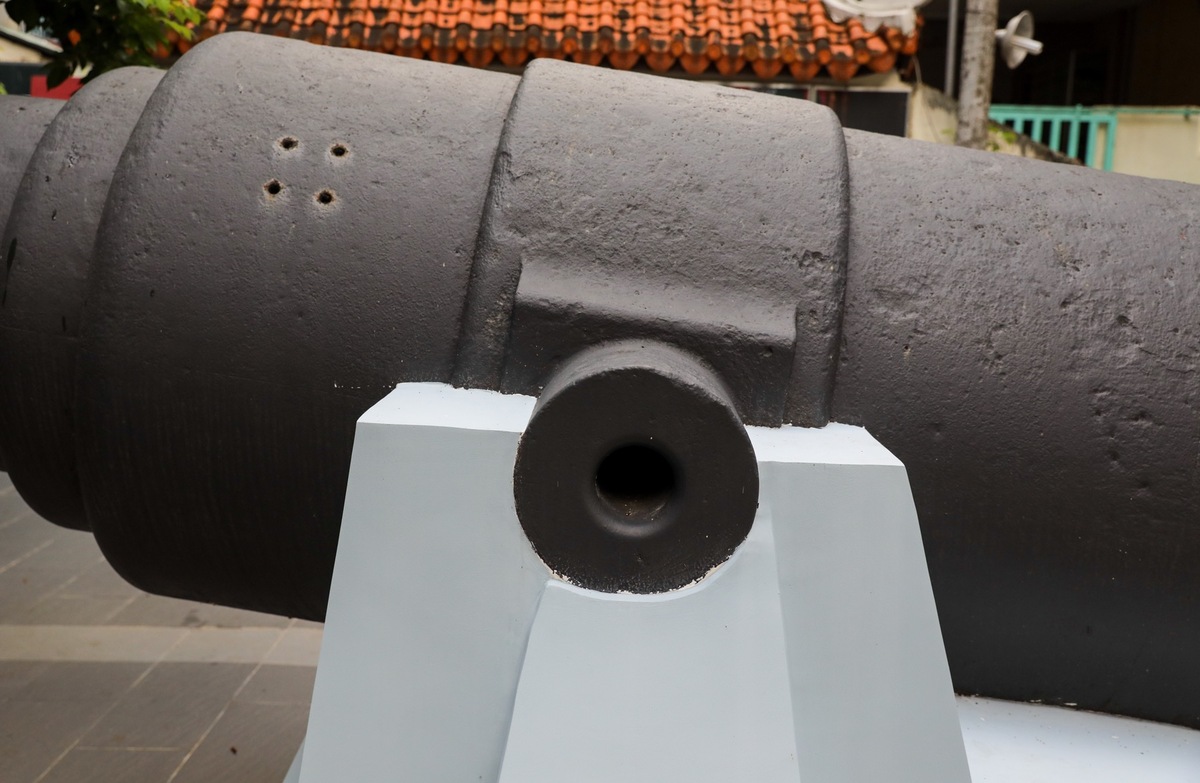The cannons at Vietnam History Museum in HCMC display historical values, and also sophisticated craftsmanship.
The museum, located in District 1, houses a collection of 13 different cannons, mostly from Vietnam and European countries. All date back to the 18th and 19th centuries with a variety of styles and sizes.
The biggest are four huge French made cannons. Among them, there is one cast in 1868 and later used by the French colonists in Vietnam.
Other, smaller-sized cannons were also made in France in the late 19th century and used by the French colonists.
Cast iron cannons from other European countries weigh dozens of tons.
On the back of these cannons are serial numbers and their year of manufacture. Aside from their massive size, they had the ability to perform long range duties with better accuracy and greater damage than Asian equivalents.
These Nguyen Dynasty cannons were cast in the early 19th century. They are smaller in size and were initially made of bronze, but later improved with the addition of more durable iron and cast iron.
Nguyen Dynasty is Vietnam's last royal family (1802-1945).
During the Nguyen Dynasty period, these large cannons were given the “general” title or lower-level titles right after they were made to show their importance in the imperial army.
Nguyen Dynasty cannons were crafted with stylized handles.
Hinges were inscribed with Chinese characters.
This heavily damaged cannon couldn’t stand the test of time after three centuries.
Vietnam History Museum was built in 1929, and formerly named Blanchard de la Brosse after the French colonial governor of the time, Paul Marie Alexis Joseph Blanchard de la Brosse.
It was the first museum in southern Vietnam. It had its name changed to Vietnam National Museum in 1954 when the French withdrew from Vietnam and received its current moniker in 1975.
The museum was designed by French architect Auguste Delaval, combining European and local styles. It’s open daily from 8 a.m. to 5 p.m., with an entrance fee of VND30,000 ($1.3).
Via: VNExpress International
full-width
The museum, located in District 1, houses a collection of 13 different cannons, mostly from Vietnam and European countries. All date back to the 18th and 19th centuries with a variety of styles and sizes.
The biggest are four huge French made cannons. Among them, there is one cast in 1868 and later used by the French colonists in Vietnam.
Other, smaller-sized cannons were also made in France in the late 19th century and used by the French colonists.
Cast iron cannons from other European countries weigh dozens of tons.
On the back of these cannons are serial numbers and their year of manufacture. Aside from their massive size, they had the ability to perform long range duties with better accuracy and greater damage than Asian equivalents.
These Nguyen Dynasty cannons were cast in the early 19th century. They are smaller in size and were initially made of bronze, but later improved with the addition of more durable iron and cast iron.
Nguyen Dynasty is Vietnam's last royal family (1802-1945).
During the Nguyen Dynasty period, these large cannons were given the “general” title or lower-level titles right after they were made to show their importance in the imperial army.
Nguyen Dynasty cannons were crafted with stylized handles.
Hinges were inscribed with Chinese characters.
This heavily damaged cannon couldn’t stand the test of time after three centuries.
Vietnam History Museum was built in 1929, and formerly named Blanchard de la Brosse after the French colonial governor of the time, Paul Marie Alexis Joseph Blanchard de la Brosse.
It was the first museum in southern Vietnam. It had its name changed to Vietnam National Museum in 1954 when the French withdrew from Vietnam and received its current moniker in 1975.
The museum was designed by French architect Auguste Delaval, combining European and local styles. It’s open daily from 8 a.m. to 5 p.m., with an entrance fee of VND30,000 ($1.3).
Via: VNExpress International












Post a Comment